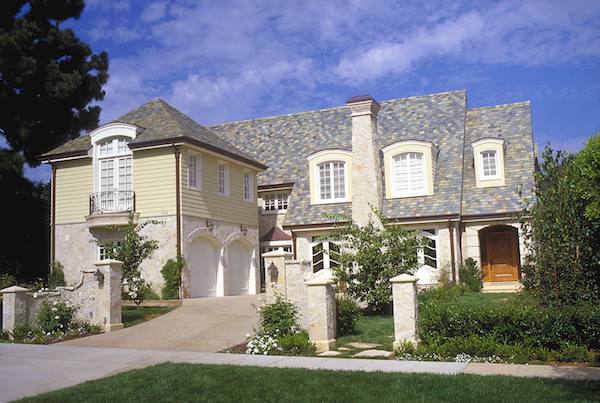
In an industry where innovation is king and roofing materials come and go, built up roofing has stood the test of time. It’s used regularly on flat roofs and has firmly established itself as “old reliable” in the roofing world. Because of that don’t expect any bells, whistles, or lace trim with these roofs: The formula for a quality built up roof is more or less the same as it was over 100 years ago. And the old adage definitely holds true: “If it ain’t broke, don’t fix it.”
Built Up Roofing Basics
Built up roofing consists of four main parts. Base sheets are initially attached to the roofing substrate, followed by a roofing felt applied with asphalt, coal tar, a special concrete, or synthetic adhesive (asphalt or tar is the most popular). Once your felt is down, a final surface layer of gravel or cap sheets is applied over the top, held down with a final layer of asphalt.
Built Up Roof Installation
So, what does this mean for DIYers? After all, this process doesn’t sound too bad, does it? Read between the lines, however, and you’ll quickly discover that in order to install this roof you’ll have to haul hundreds of pounds of hot asphalt, hot tar, and gravel or other aggregate up to your rooftop. Add to that the hours spent working with those materials in the hot sun and special equipment required, and it’s clear why this home improvement is better left to an experienced roofing crew. Quite simply, it’s too labor intensive for most homeowners to even consider doing on their own.
Check out our roofing cost calculator to start budgeting for your project.
How to Increase Energy Savings for the Roofing
That said, there are some smart things you can do when planning a build up roofing installation. (Note: Built up roofing is sometimes called build up roofing.) In the past, the main downside of these roofs has been energy efficiency. Because they lay flat (i.e. are exposed to the full brunt of the sun) and because they are made of dark, heat absorbing materials (tar and asphalt), they can soak up a considerable amount of heat which is transferred down into your home. Until recently, there has been little to combat this effect other than applying a light colored gravel or aggregate as a surface material. The new wave of cool roof coatings, however, is changing how build up roofing is finished.
Ready to start your built up roof?
Find Pros“Cool” Build Up Roofs
Cool roofs, achieved through the application of a reflective roof coating, can make a huge difference when it comes to improving the energy costs, especially cooling costs, associated with build up roofing. By reflecting much of the sun’s light and heat instead of absorbing it, reflective roof coatings can reduce warm weather energy costs by up to 70%. And that doesn’t include the tax breaks you’ll get if your reflectively coated roof meets Energy Star standards as well.
Talk to a Built Up Roof Contractor
It’s important, as a homeowner, to get a grasp of the basics of any roofing system you’re considering for your home, but the details must always be discussed with a roofing contractor. Local climate is a huge factor in choosing the possible roof for your home. So are pre-existing roofing structures, if you’re considering replacement roofing, rather than roof installation for a housing start. Either way, you should talk to an experienced roofer that knows the ins-and-outs of your region and your home. As mentioned before, this isn’t a project you’re going to tackle on your anyway, so once you get a basic grasp for what you need to ask your contractor, it’s never too early to contact a local professional.
 Best Asphalt Shingles – A Buyer’s Guide
Best Asphalt Shingles – A Buyer’s Guide  Rubber Roofing – Benefits & Alternatives
Rubber Roofing – Benefits & Alternatives  Should You Layer Shingles on Your Roof?
Should You Layer Shingles on Your Roof?  Copper Guttering: A Stylish Addition
Copper Guttering: A Stylish Addition  How to Keep Your Metal Roof Healthy
How to Keep Your Metal Roof Healthy 

Are You Familiar With This Topic? Share Your Experience.